Roman Archeology Exam 1
1/68
There's no tags or description
Looks like no tags are added yet.
Name | Mastery | Learn | Test | Matching | Spaced |
|---|
No study sessions yet.
69 Terms
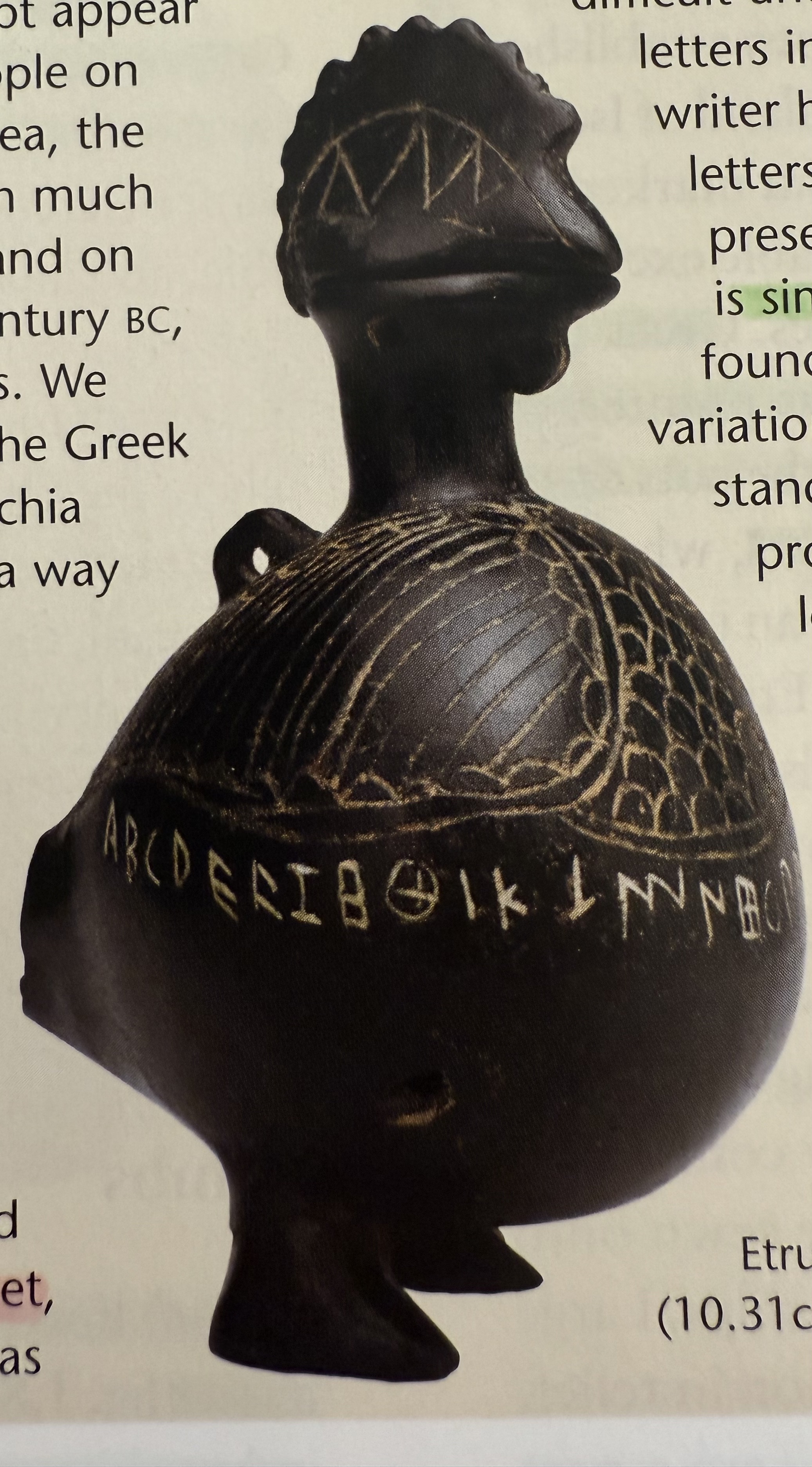
Etruscan bucchero pottery. An abecedarium (alphabet) has been scratched onto it. It was likely used to practice writing.
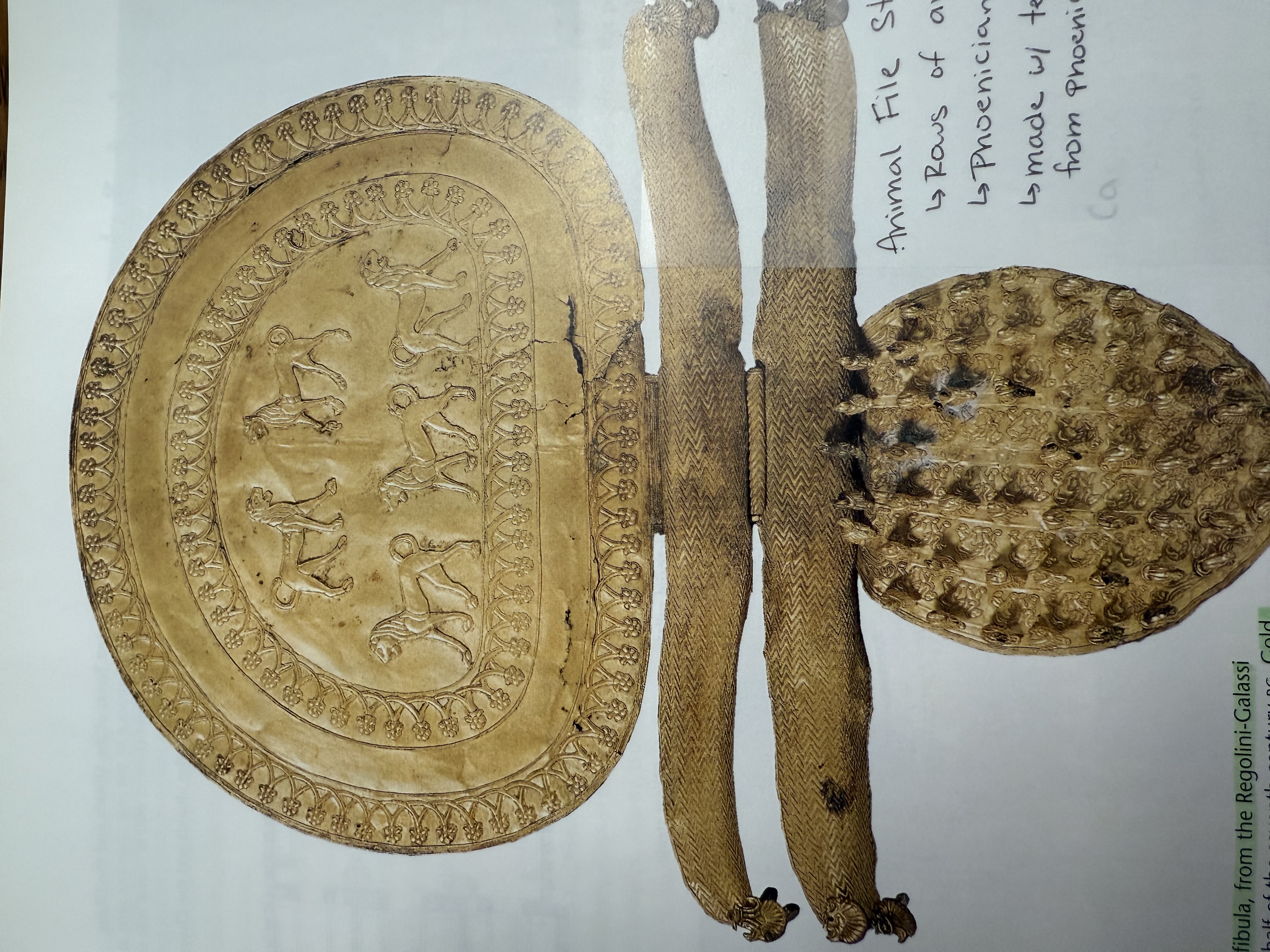
Etruscan fibula from Regolini-Galassi Tomb. Made of gold. Has Phoenician iconography. Indicates relationship with phoenicians.
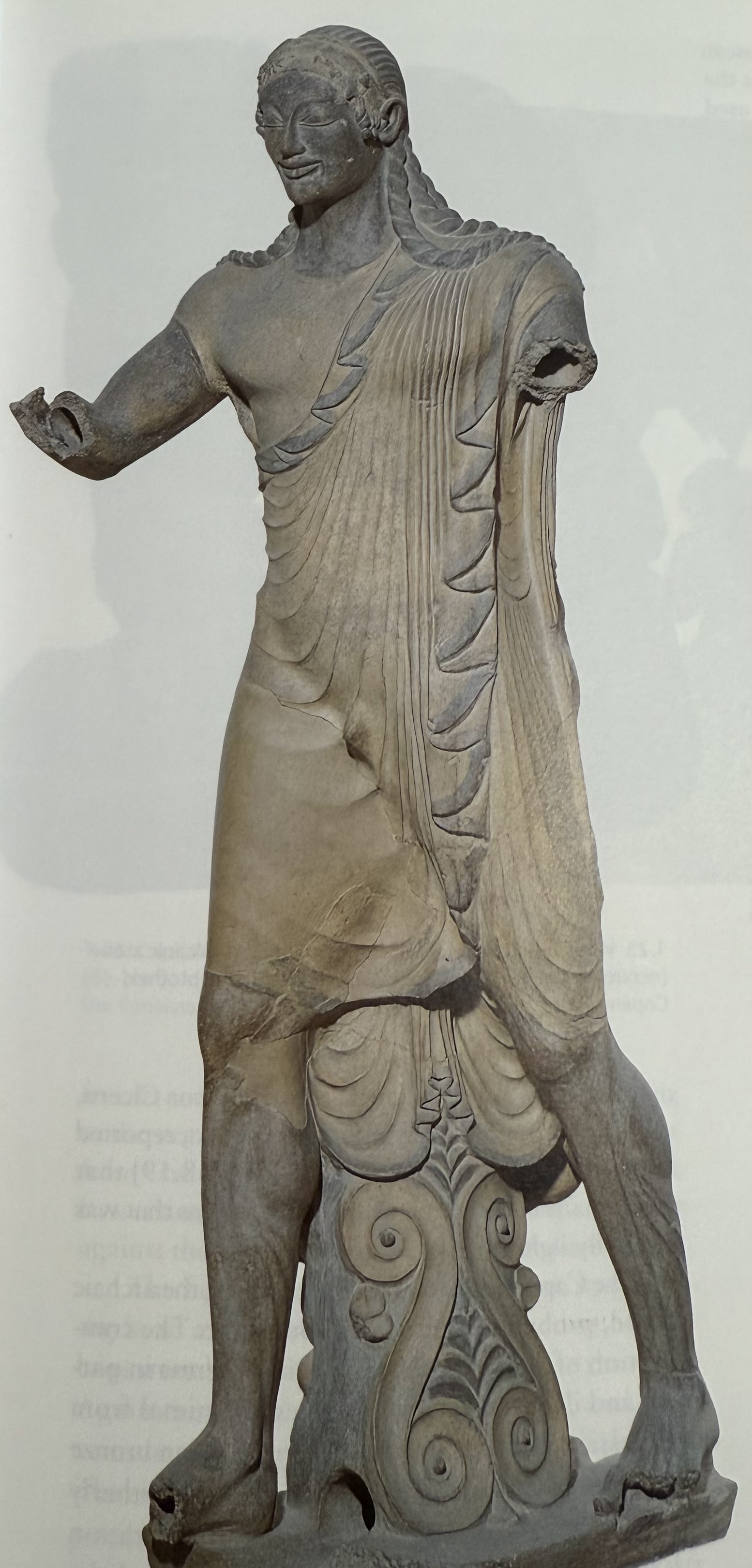
Apollo of Veii. Etruscan painted terrocotta. Has several greek elements (long braided hair, almond eyes, archaic smile), but no heroic nudity.

Wounded Chimaera. Bronze Etruscan votive.

Mars of Todi. Etruscan bronze statue. Religious and militarist.
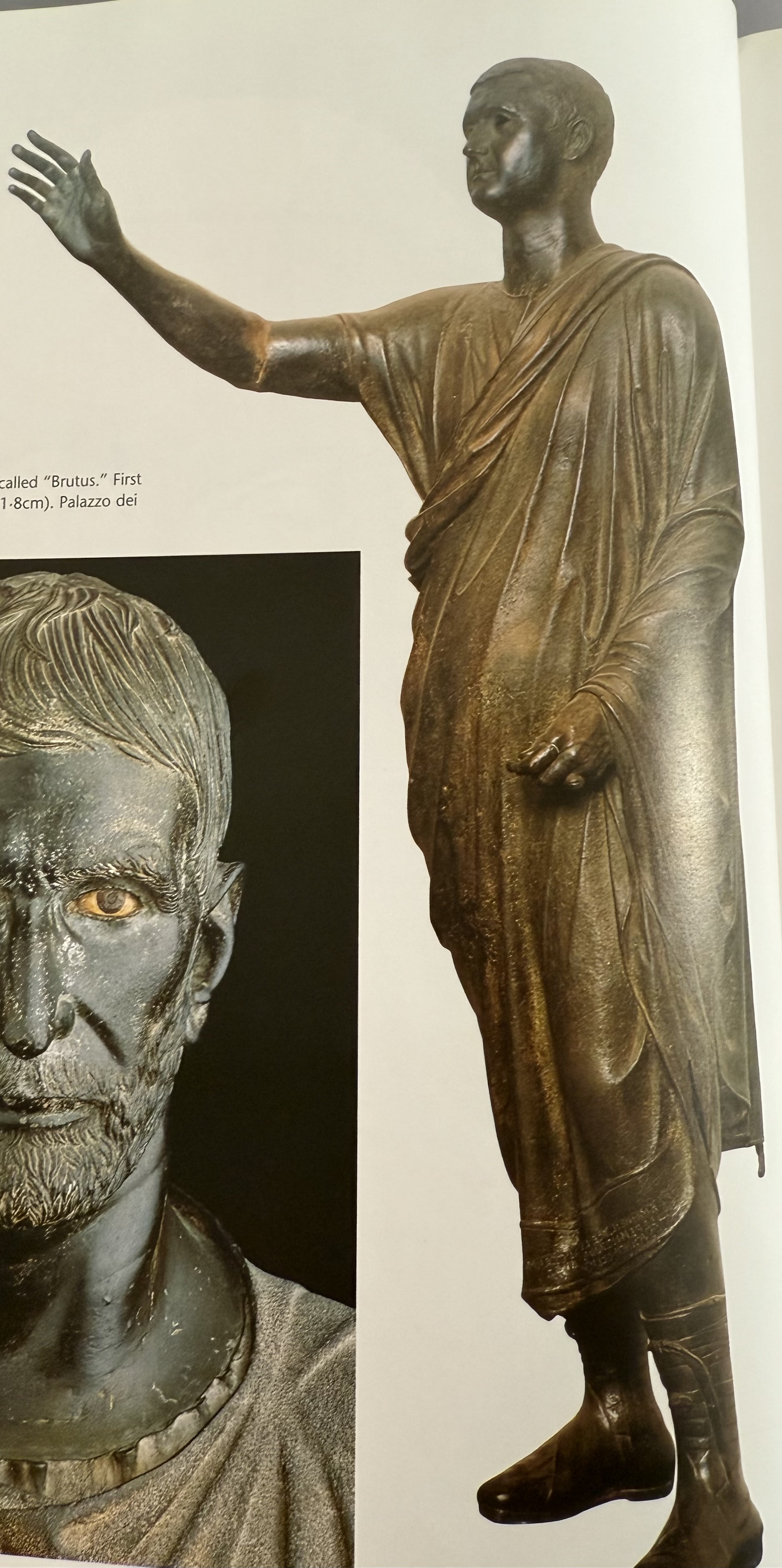
Portrait of Aulus Metellus. Roman. He is addressing an audience (orator). Wearing the garb of a senator (toga and boots), but has an etruscan inscription on the toga. Likely means that he comes from an etruscan family who has assimilated to rome.
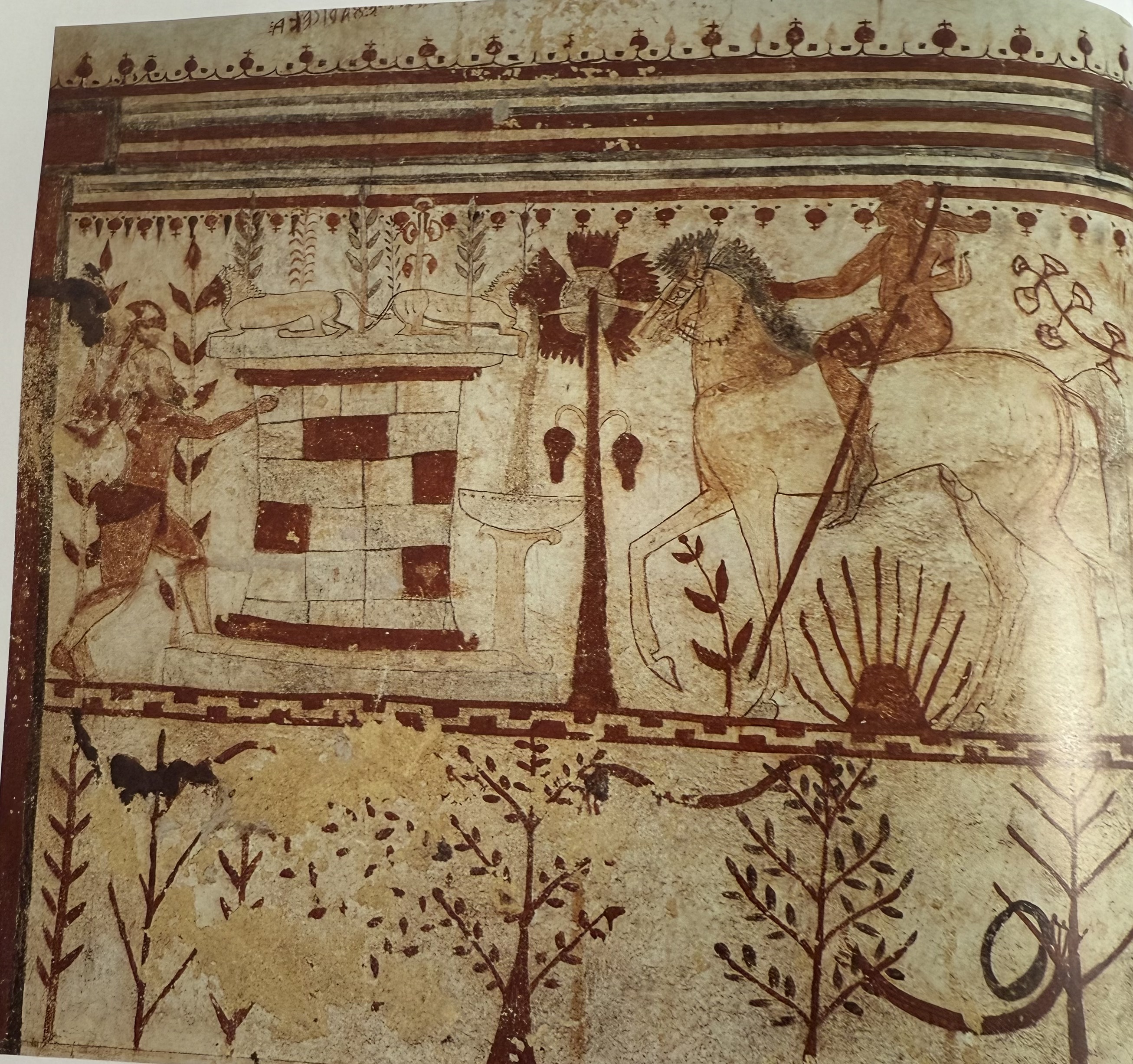
From Tomb of the Bulls. Fully Etruscan (no roman influence) Original design is a greek myth.
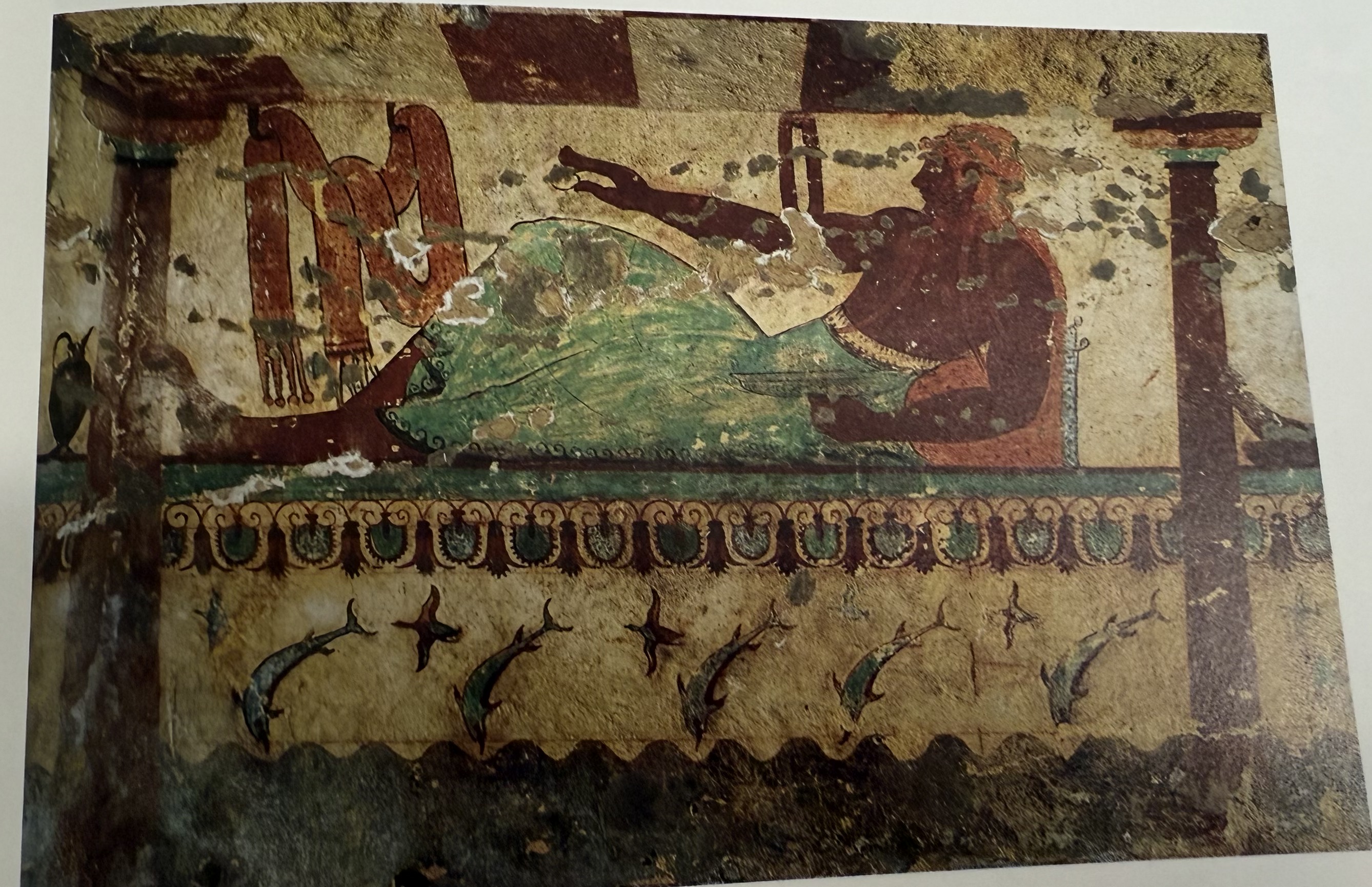
Tomb of the Lionesses. Reclining banqueter. Some elements of greek design (doric columns). I

Battle Between Romans and Macedonians. Earliest relief that can be claimed to represent a roman historical event. Carved by a greek.

Census-taking historical relief. Marble. Showcases the roman desire to show the divine with ordinary people. Mars is overseeing the sacrifice and the census taking. Figures appear in “comic strip” fashion for clarity.
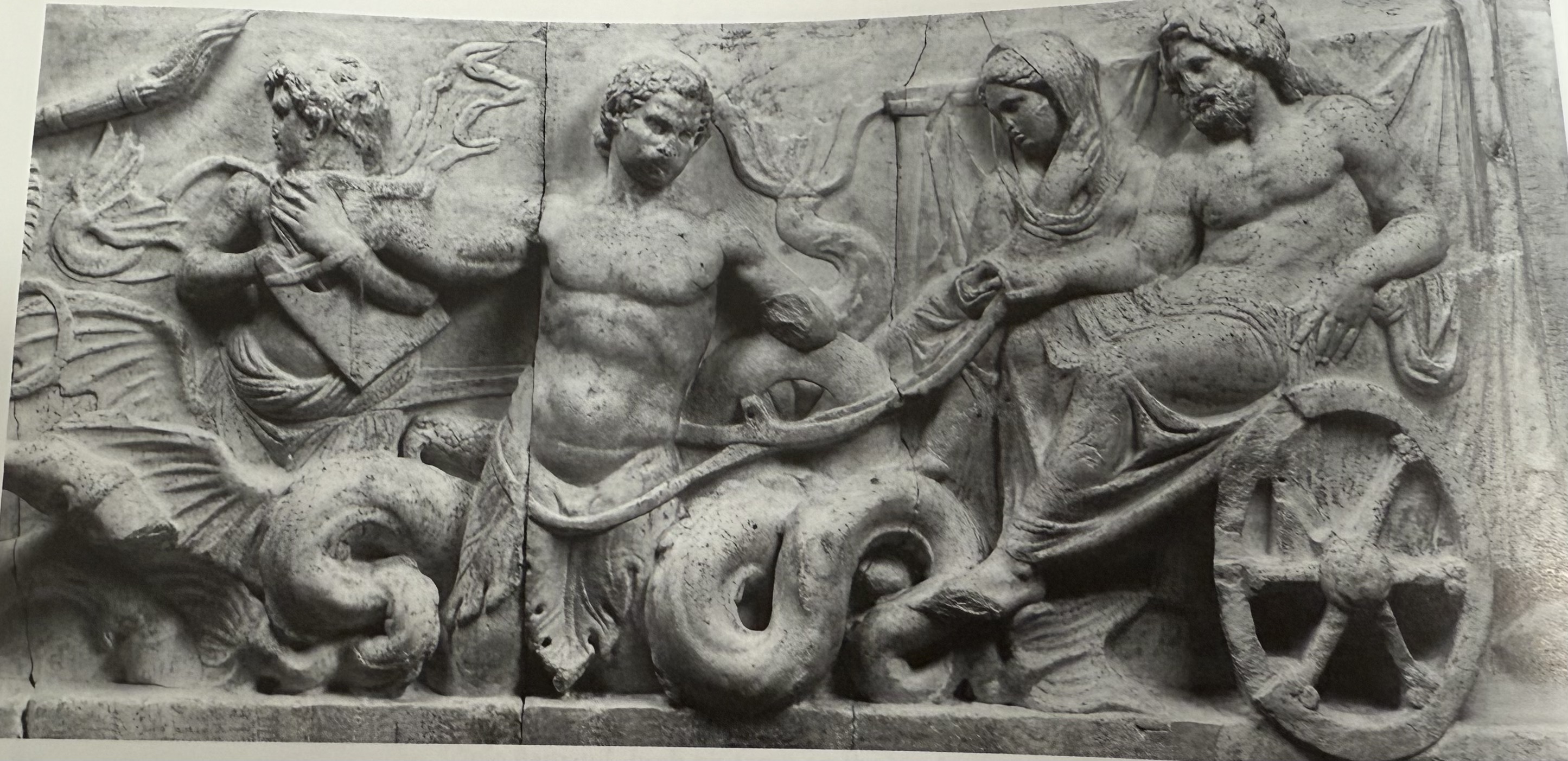
Wedding of Amphitrite and Neptune. Marble. Likely carved by a greek, or someone trained in Hellenistic greek art.
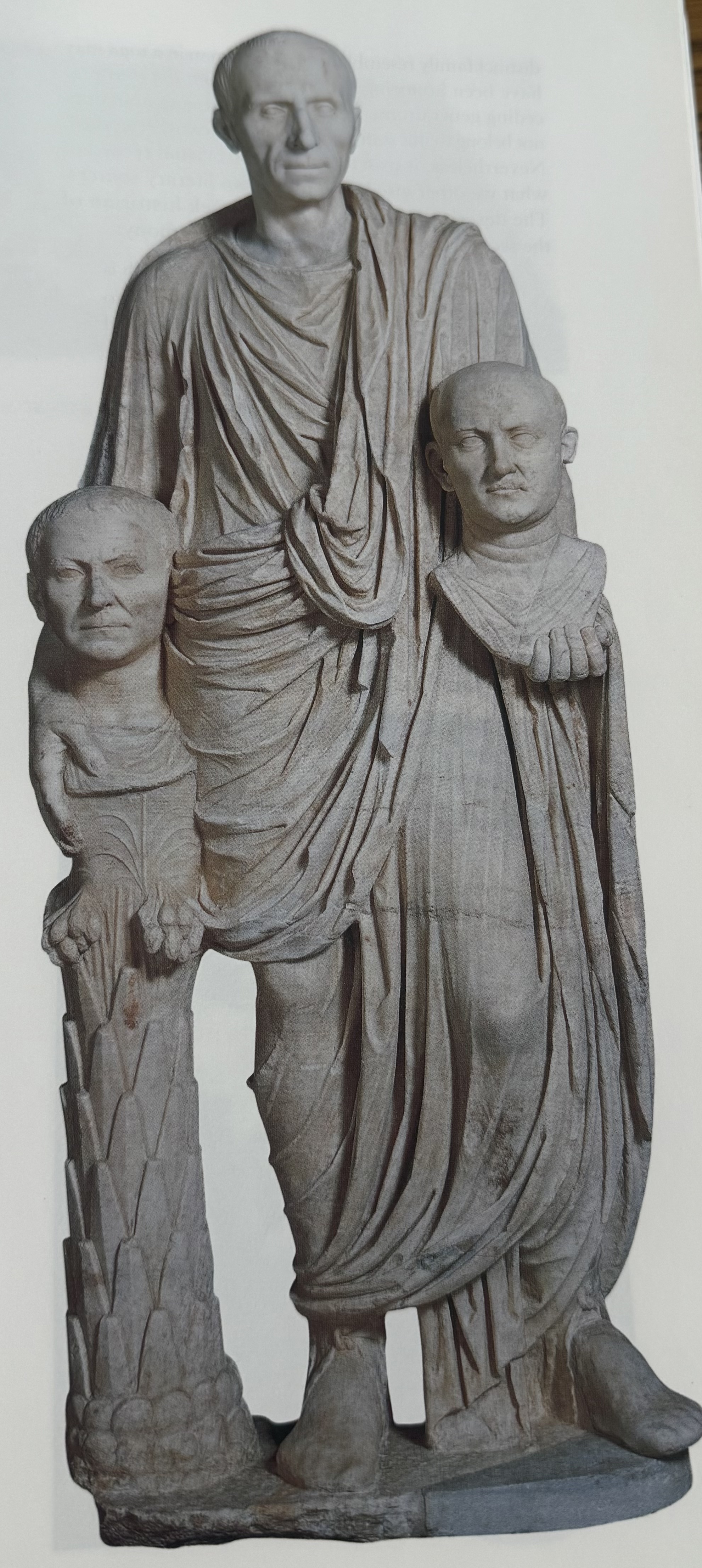
Patrician carrying two heads. Example of verism.
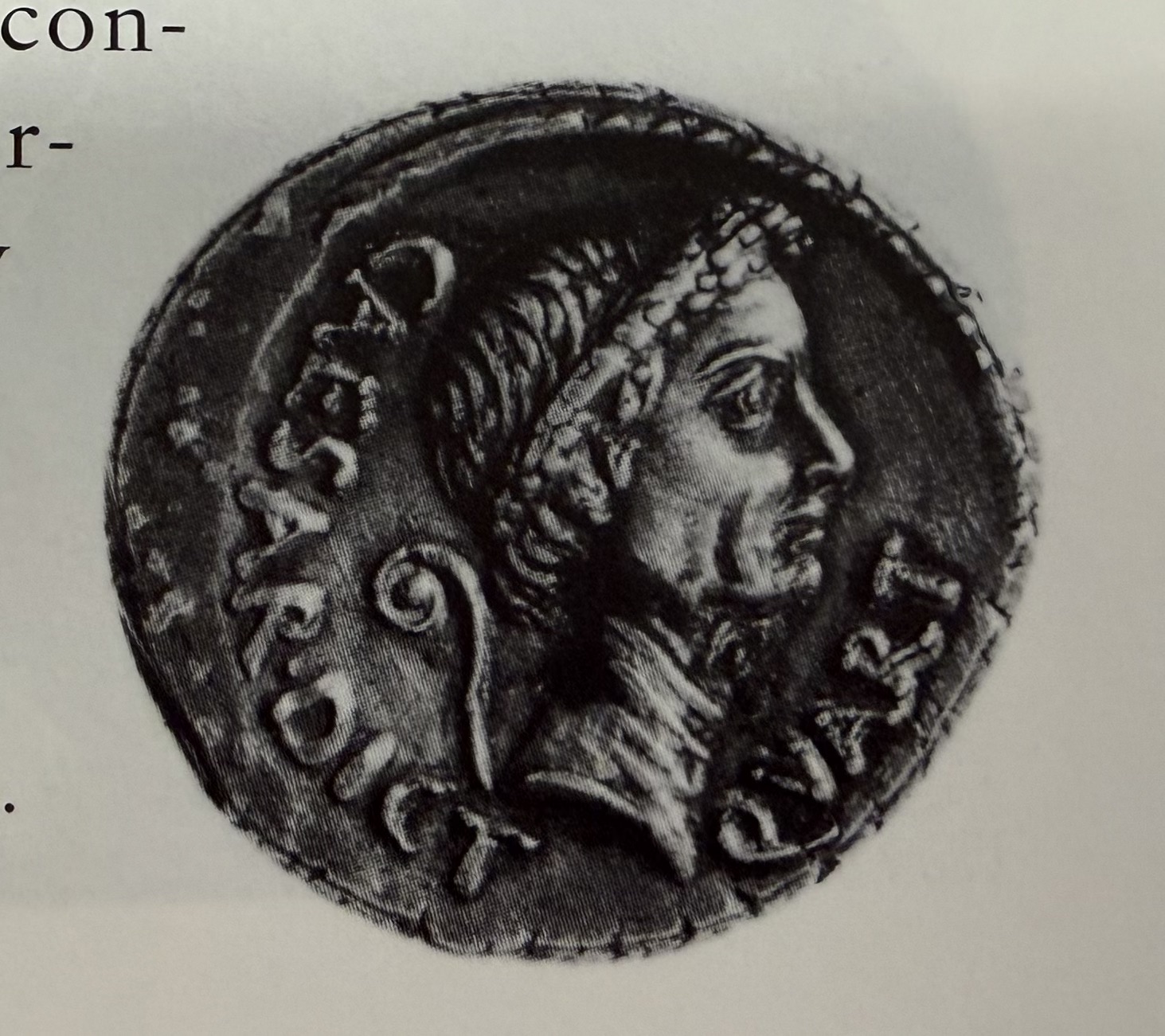
Coin of Julius Caesar (first roman to put his face on a coin). Does not depict verism, but shows Juliuis Caesar in a heroic light. Pushed propoganda.

Portrait of Pompey. Marble. His hair resembles portraits of Alexander the Great (hoping to draw an association between him and the leader).
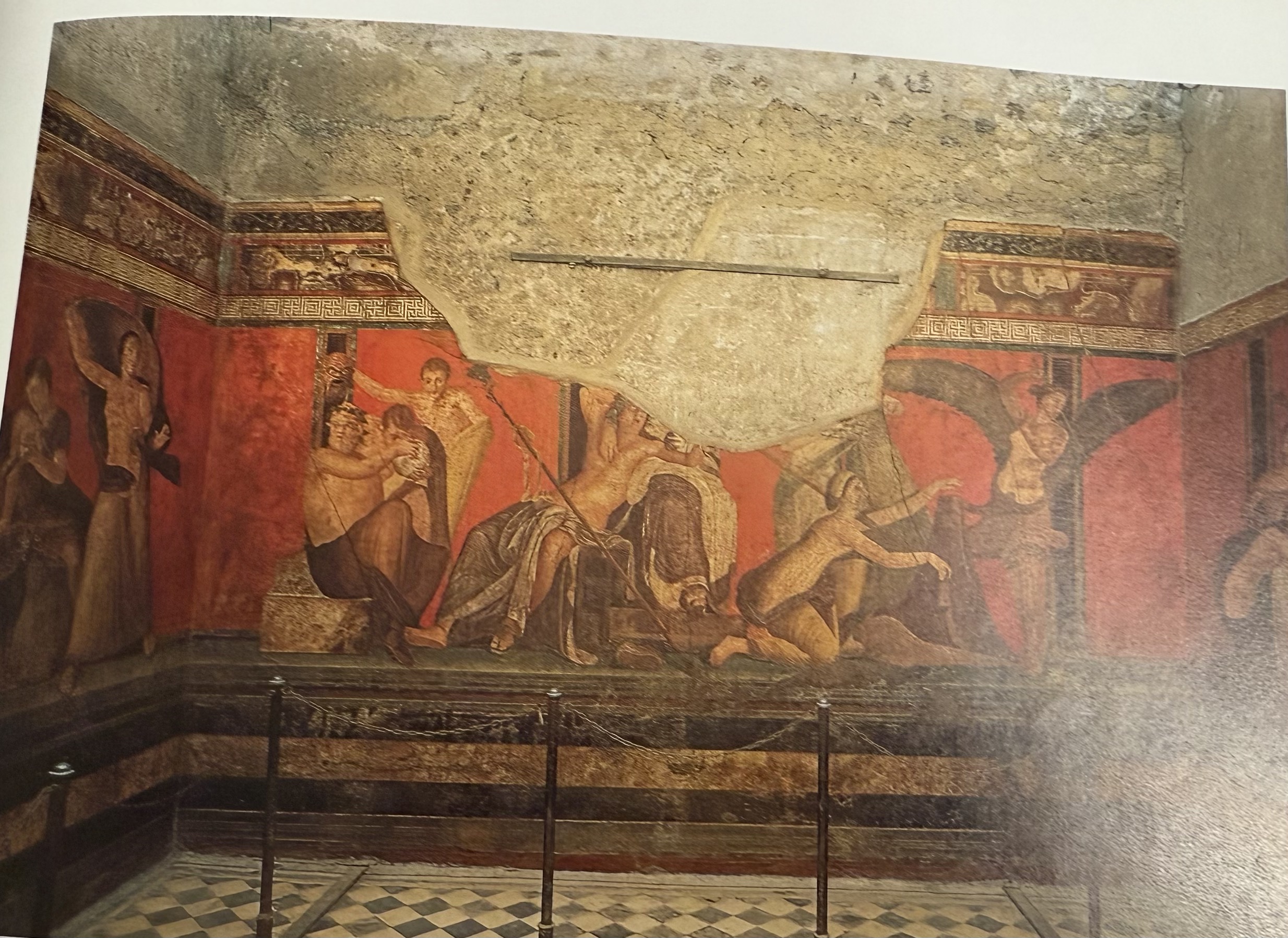
Wall painting. Pompeii. Second Pompeian style.
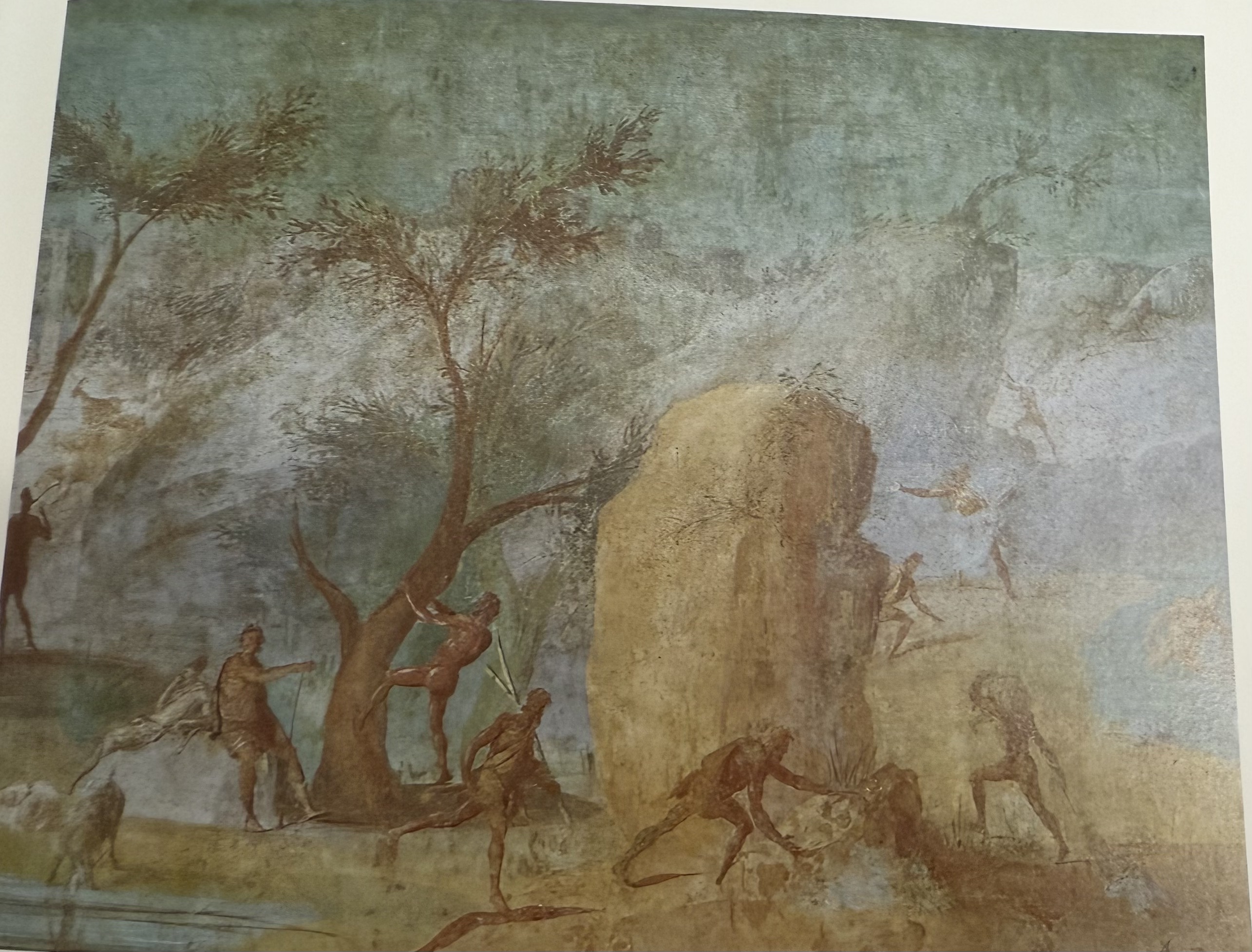
Wall painting found in Rome. Copy of greek artwork, but added roman details ( framing of scene with columns or pilasters)
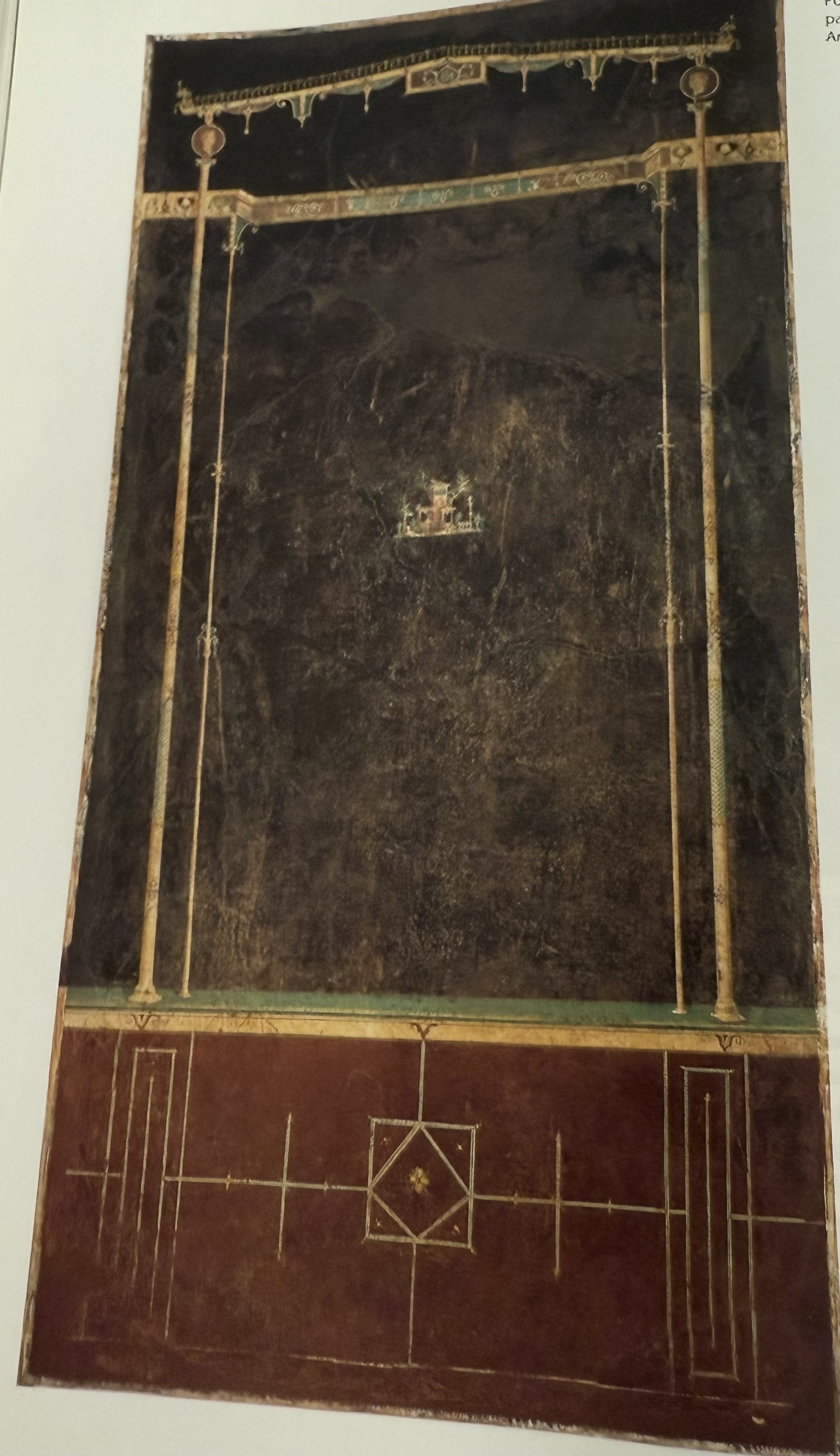
Wall paining from near pompeii. Third Pompeii style. Augustus
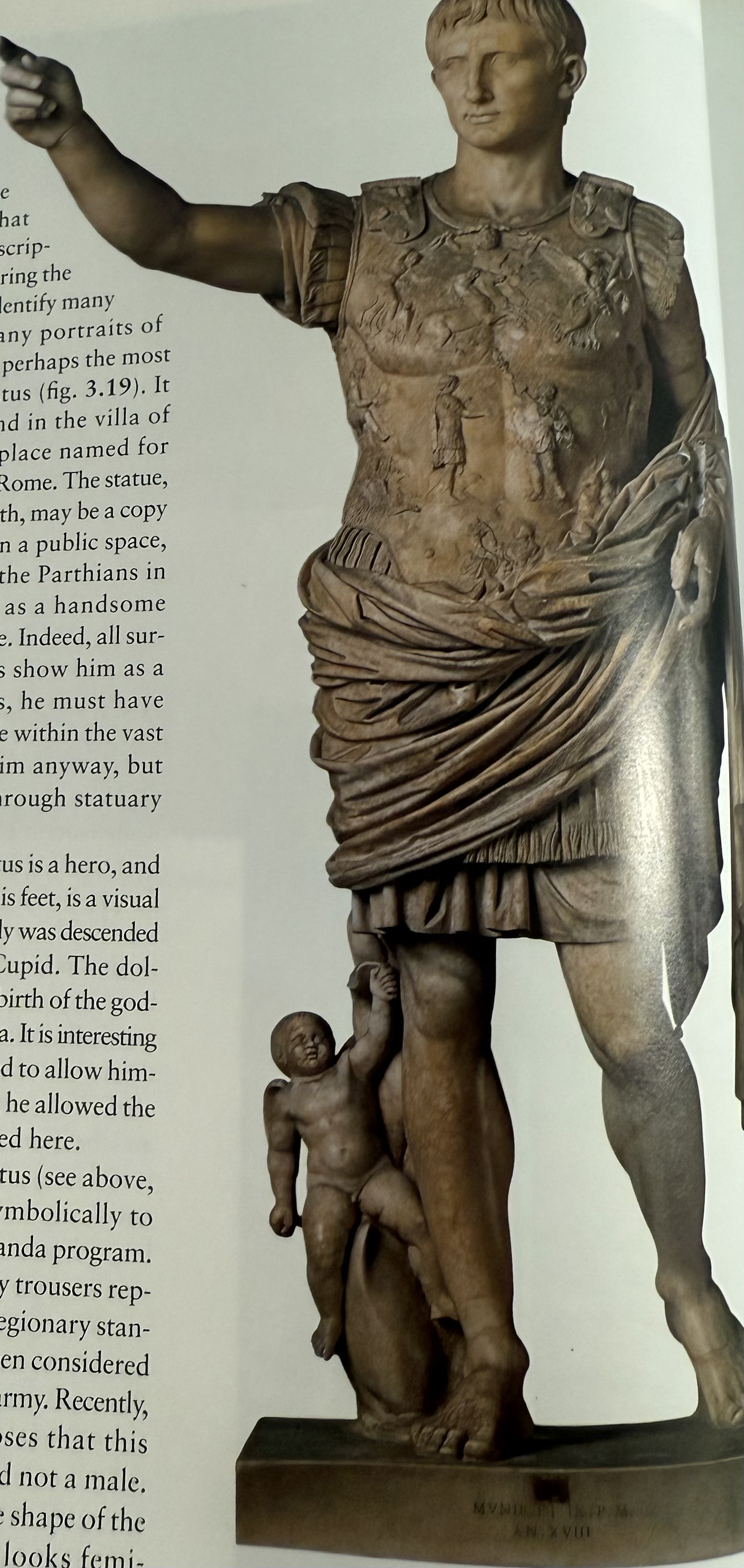
Augustus of Prima Porta. Marble. No heroic nudity. Idealized version in his prime (verism is over). Ties to venus via Cupi. Breastplate covered in propoganda (returning of legionary standard).
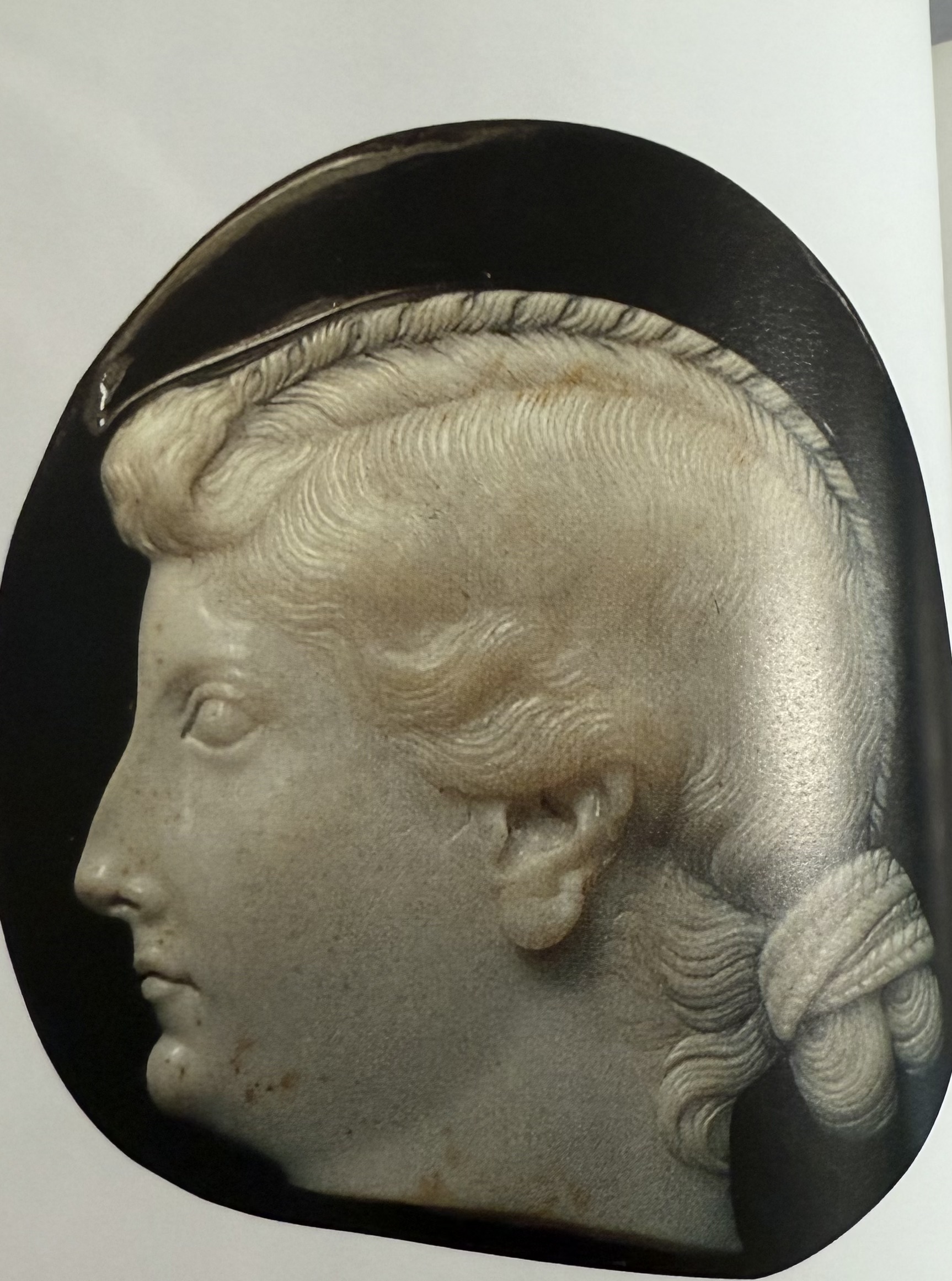
Portrait of Livia. Hair shown in Nodus style as always. Heavily controlled.
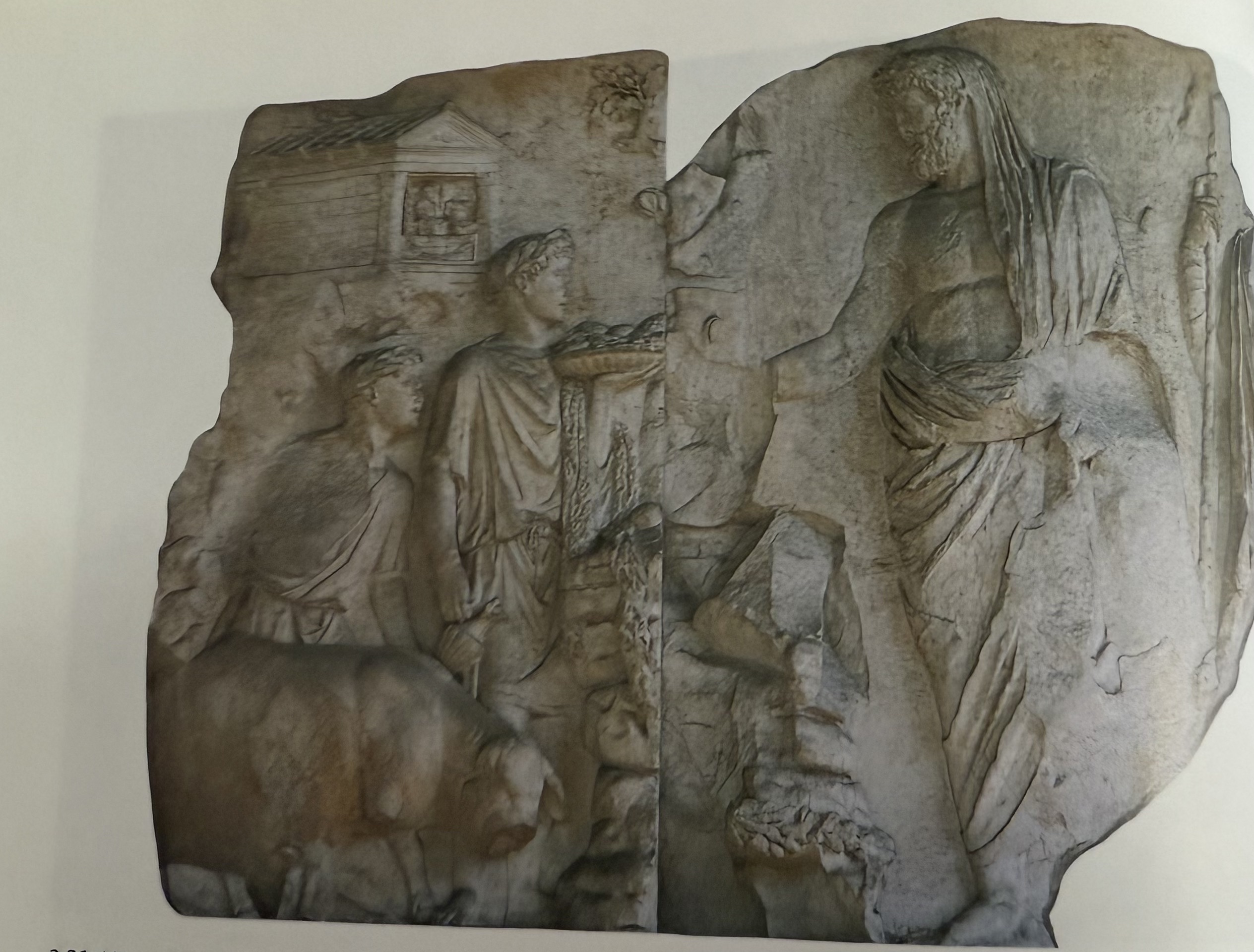
Aeneas sacrificng a cow on the Ara Pacis Augustae. Augustus linking himself to Aeneas (Venus) and the Julians. Dynastic.
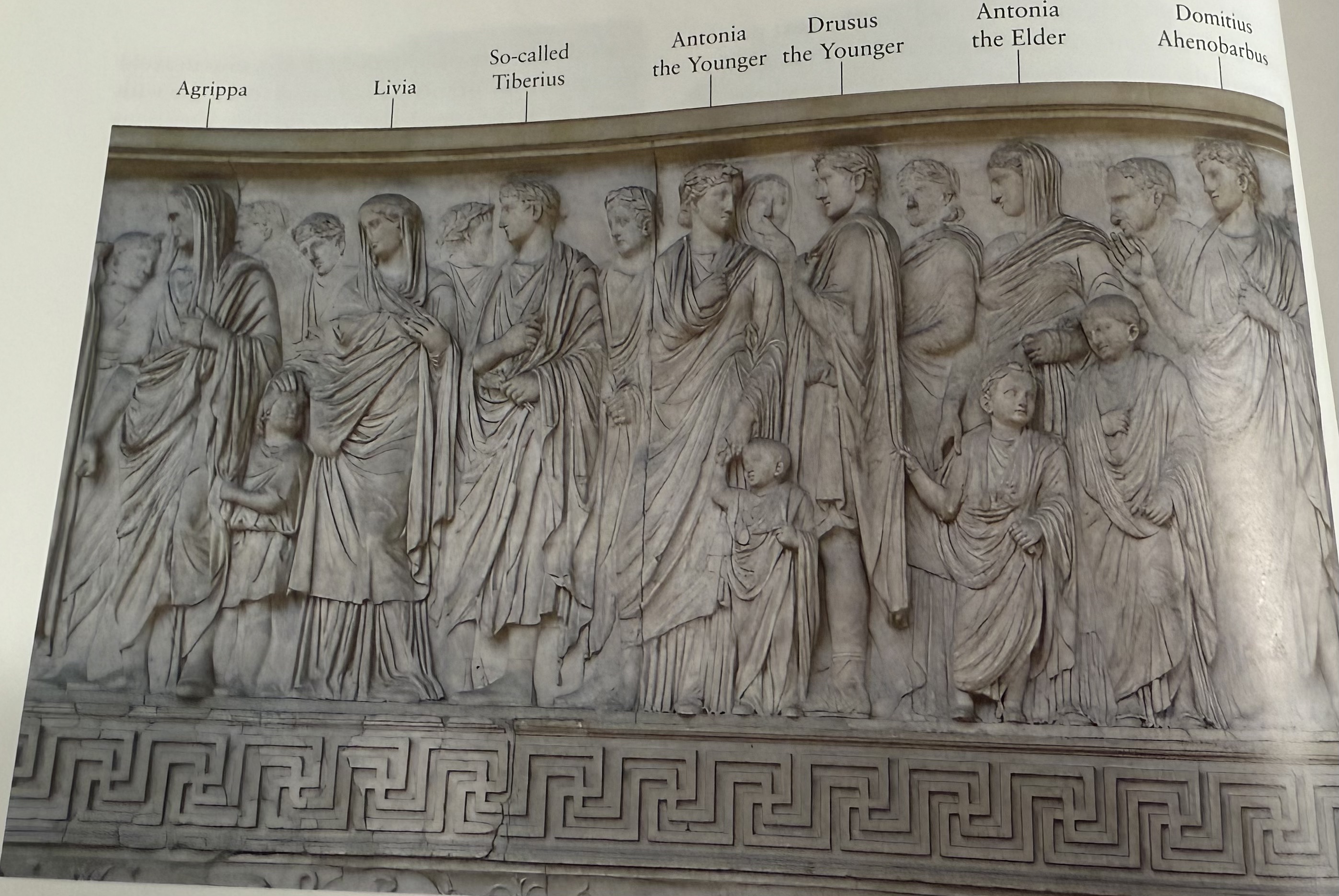
Imperial Procession on Ara Pacis Augustae. Covered head ties him to Aeneas on other side. Non roman child shown. First time children are shwon in state sponsored relief.
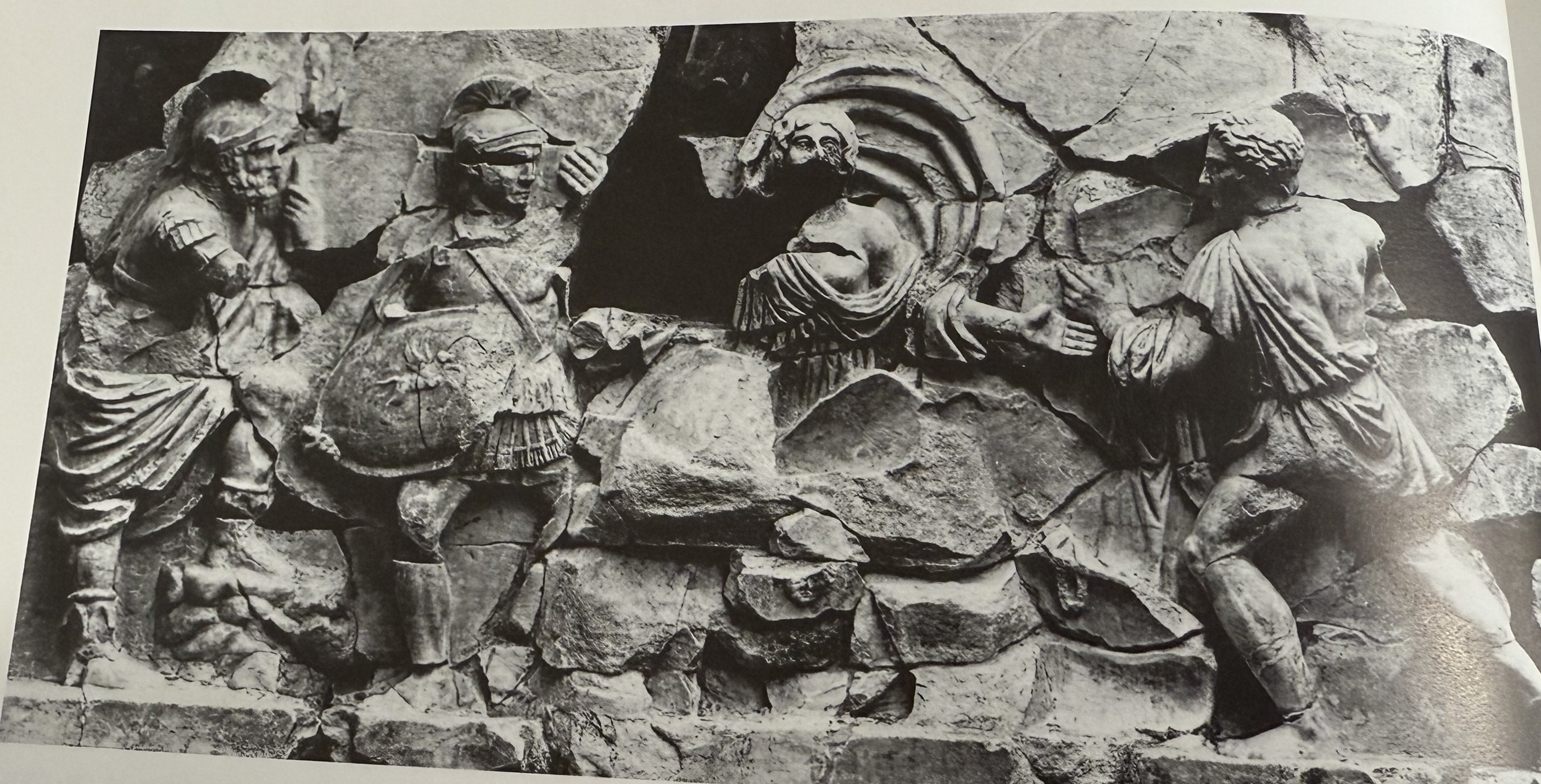
Punishment of Tarpeia. Marble. Basilica of Aemilia. “Do not be a traitor” messaging.
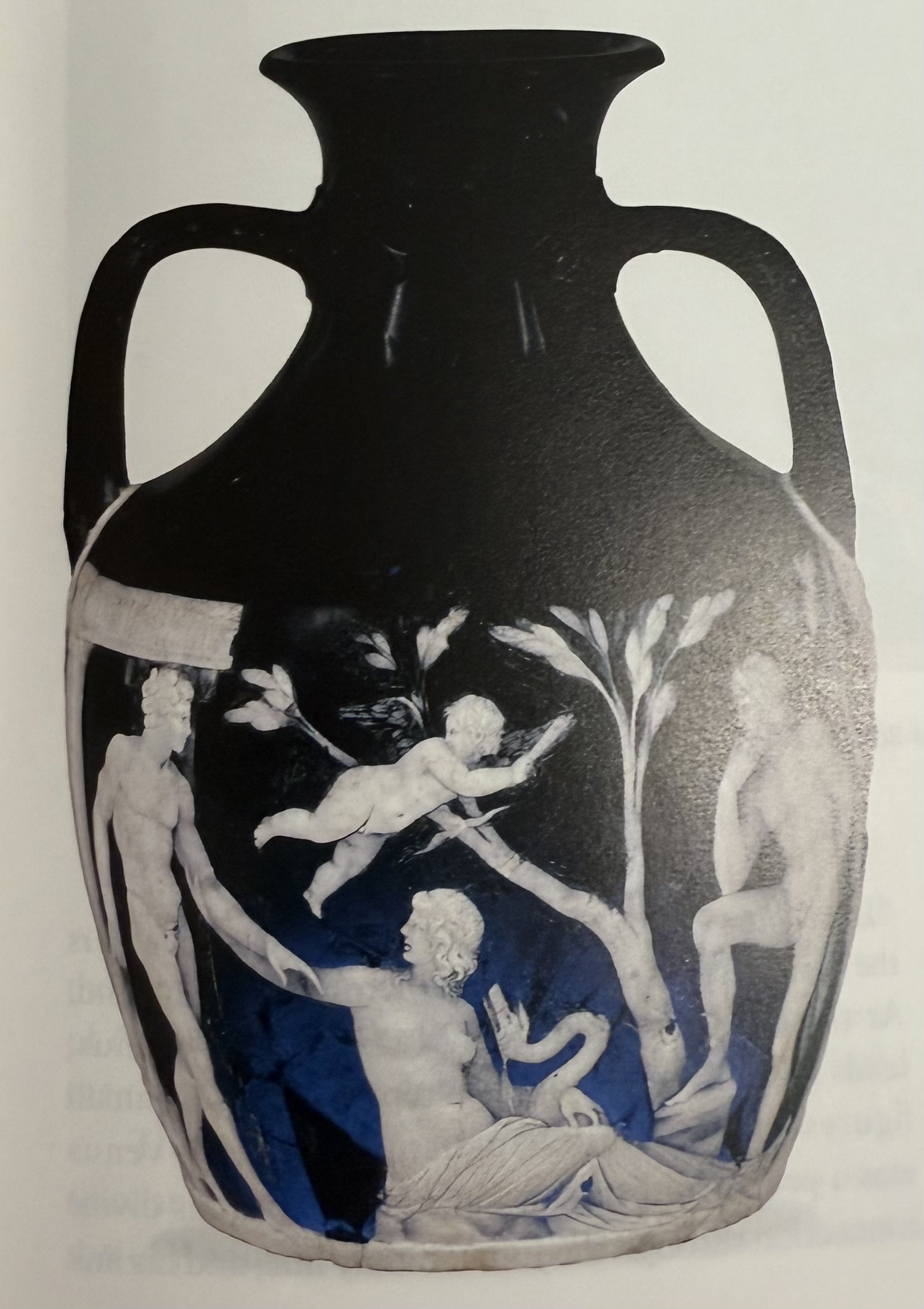
Portland Vase. No archeological context. No idea what is depicted in the mythological scene. Pottery popularity decreases and glass gets very popular.
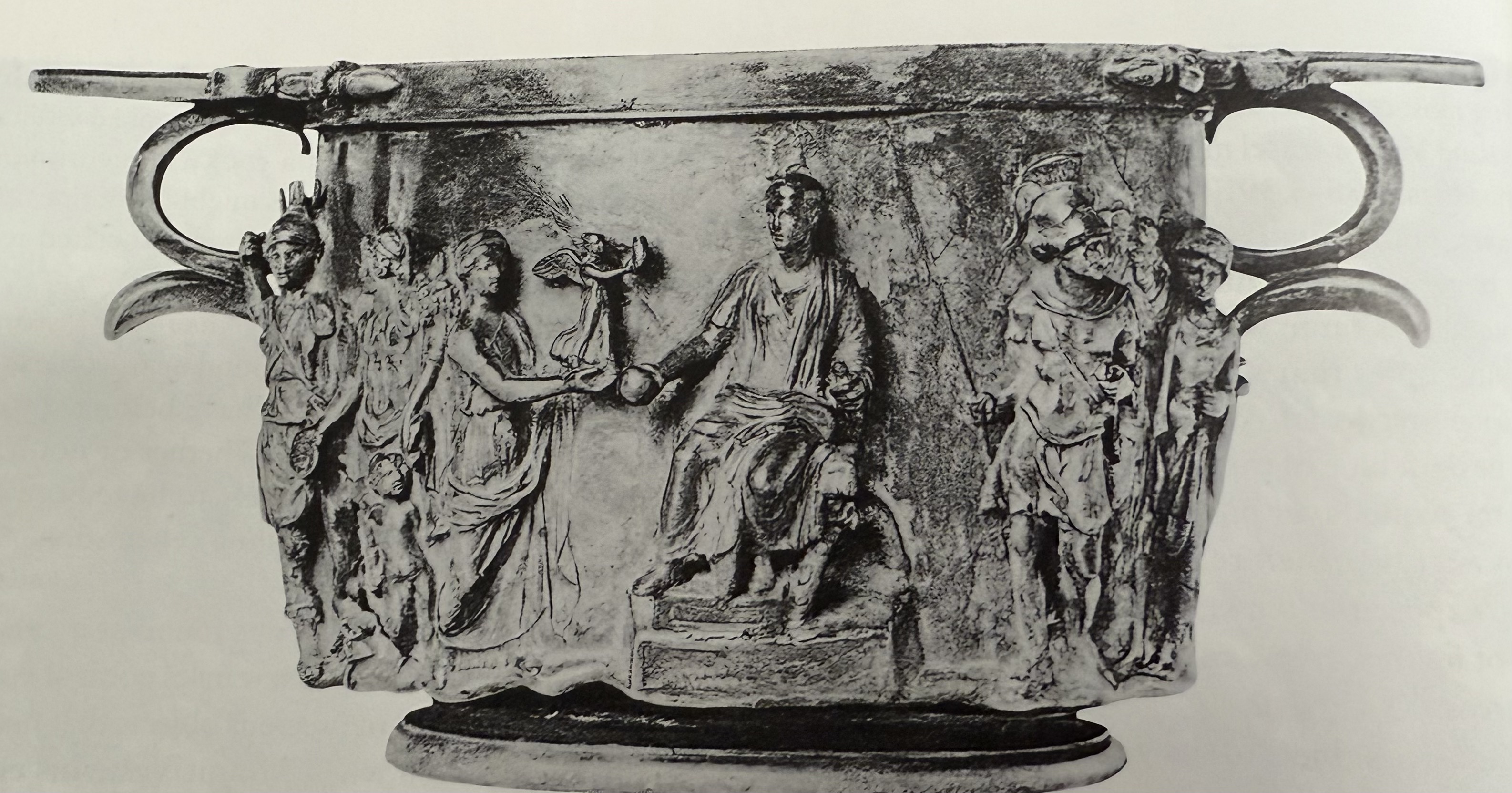
Silver cup. Augutus is interacting with divine. (promoting himself as divine). Venus presenting him the statue of victory. Mars delivering captured non romans.
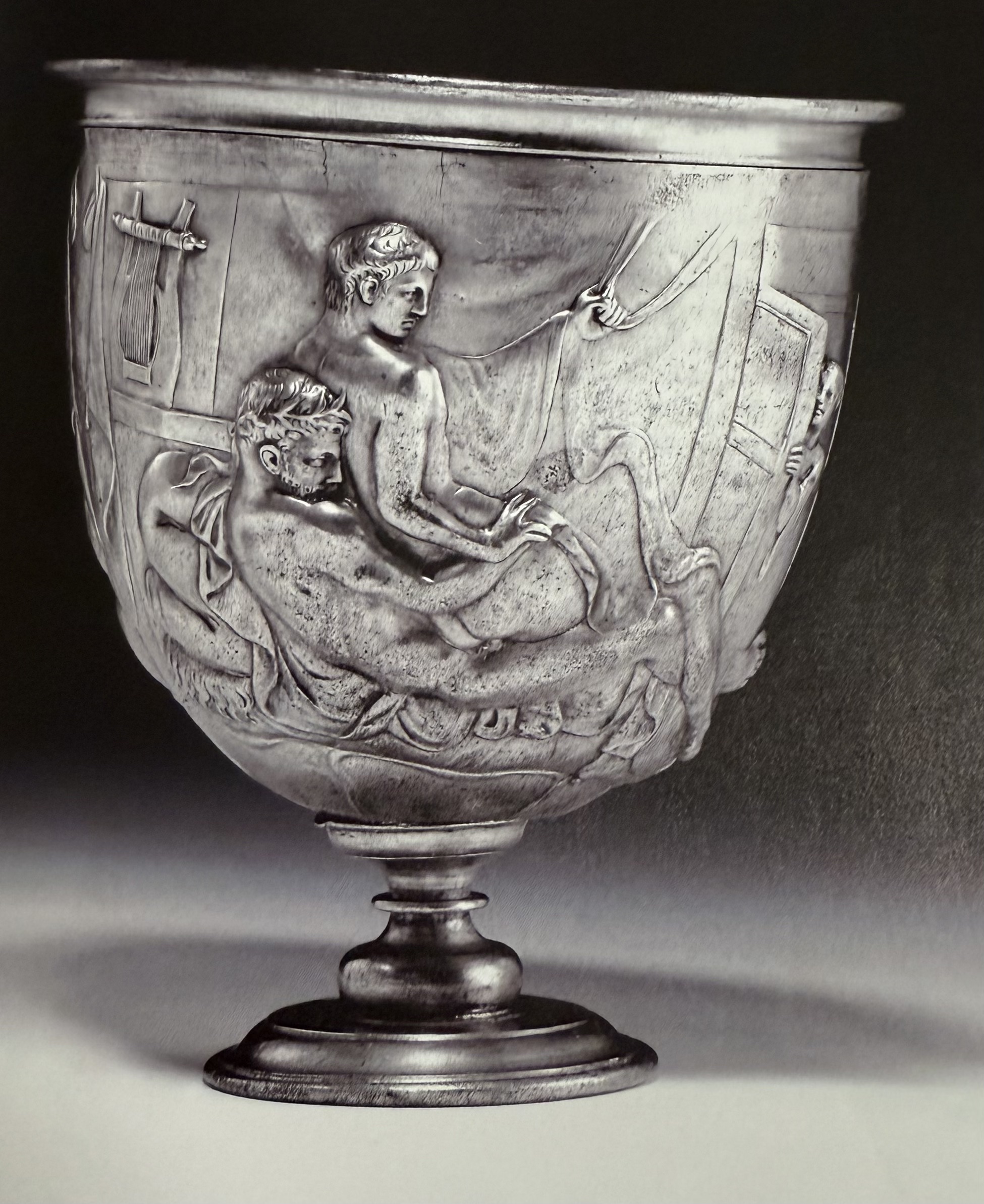
Warren cup. Homoerotic art, one of a kind. Controversial object.

Arrentine ware, Rome. Mass produced piece of pottery. Also depicts homoerotic love.
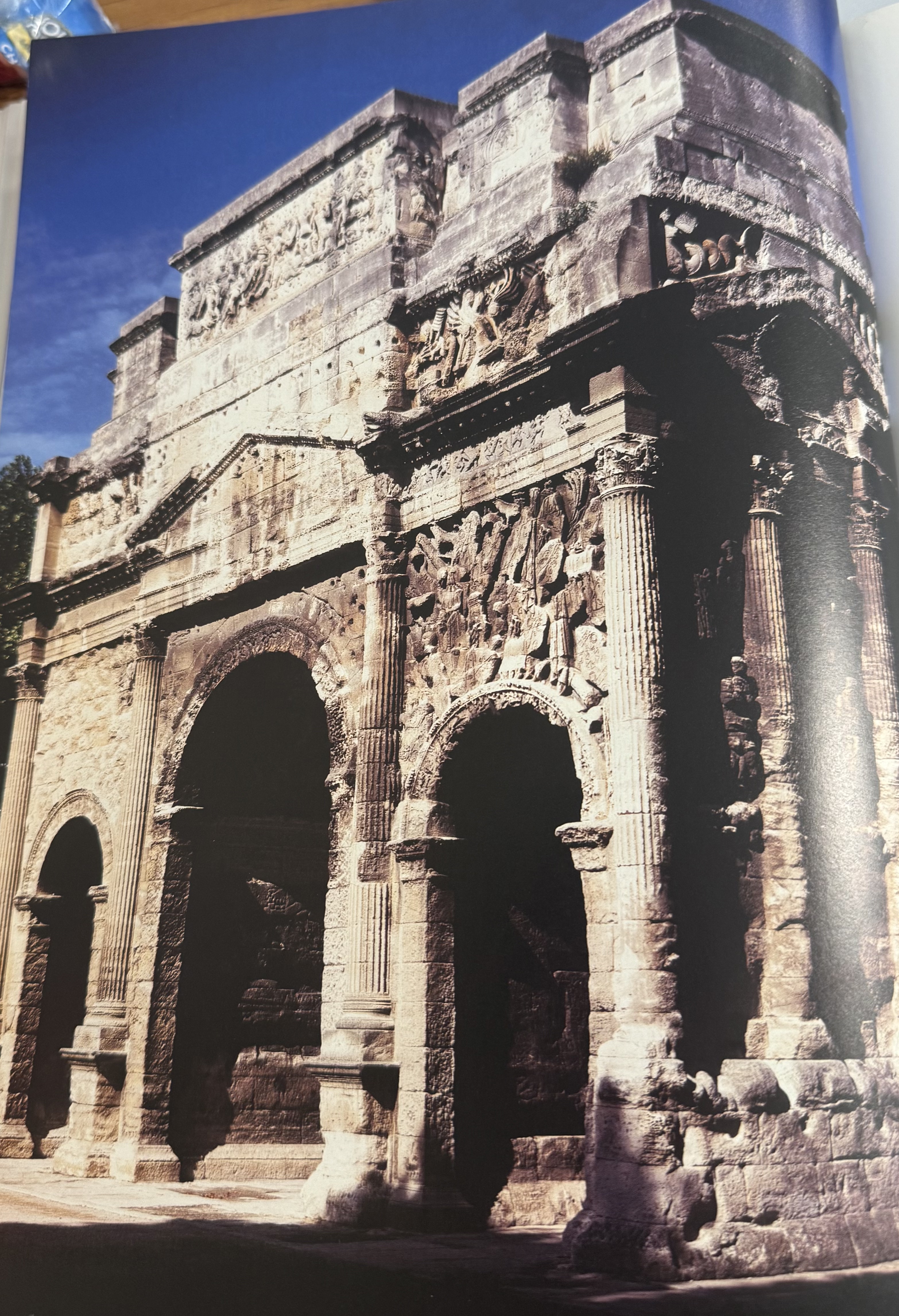
Triumphal Arch at Orange. Limestone. Symbol of power and control. In rome, triumphal arch was used to celebrate a victorious general. Outside of rome, monuments were built to remind people of roman victories.
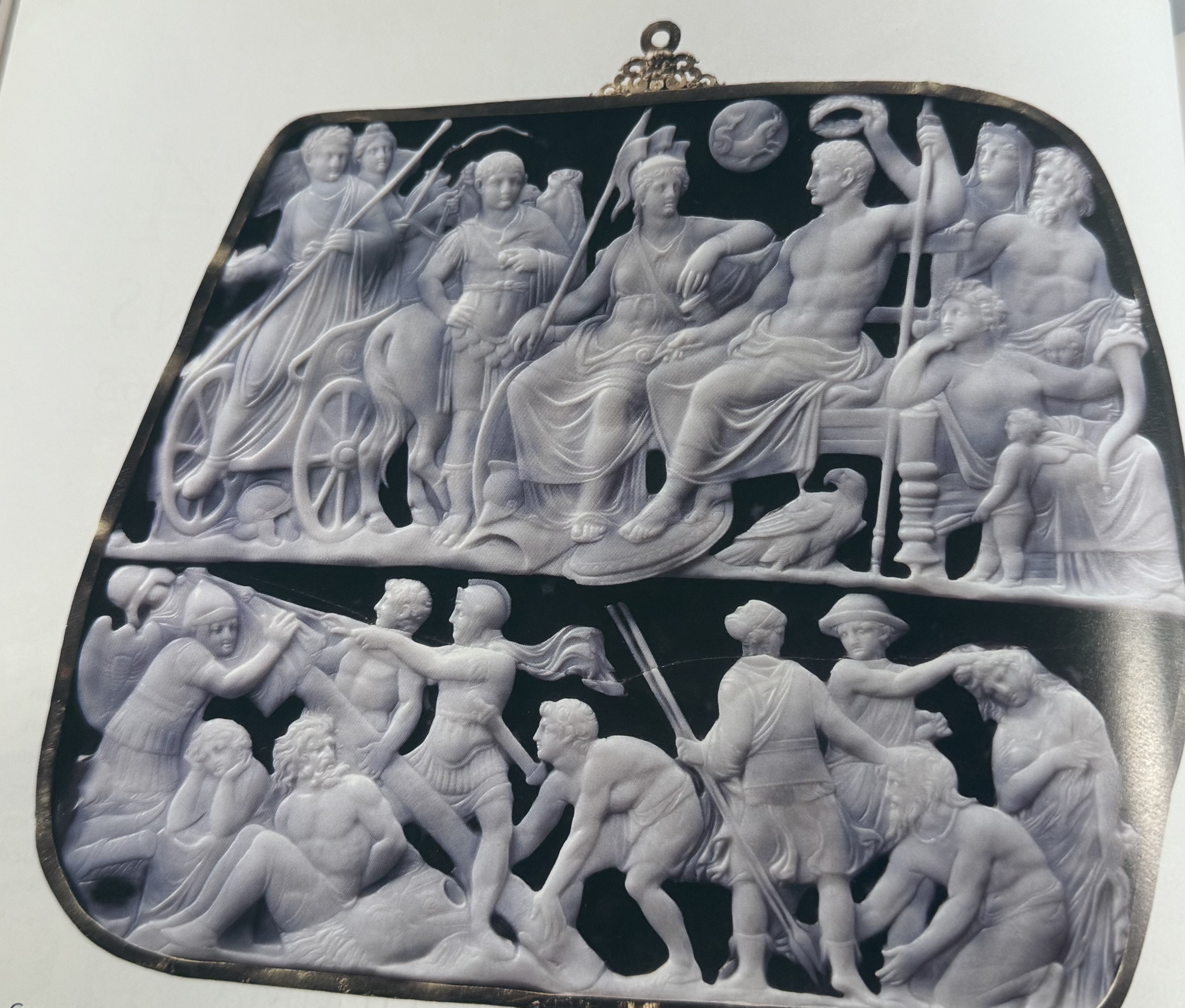
Gemma Augustea shows the transfer of power from Augustus to Tiberius. Augutsus shown with Divine pretension, Tiberius shown as triumphant.
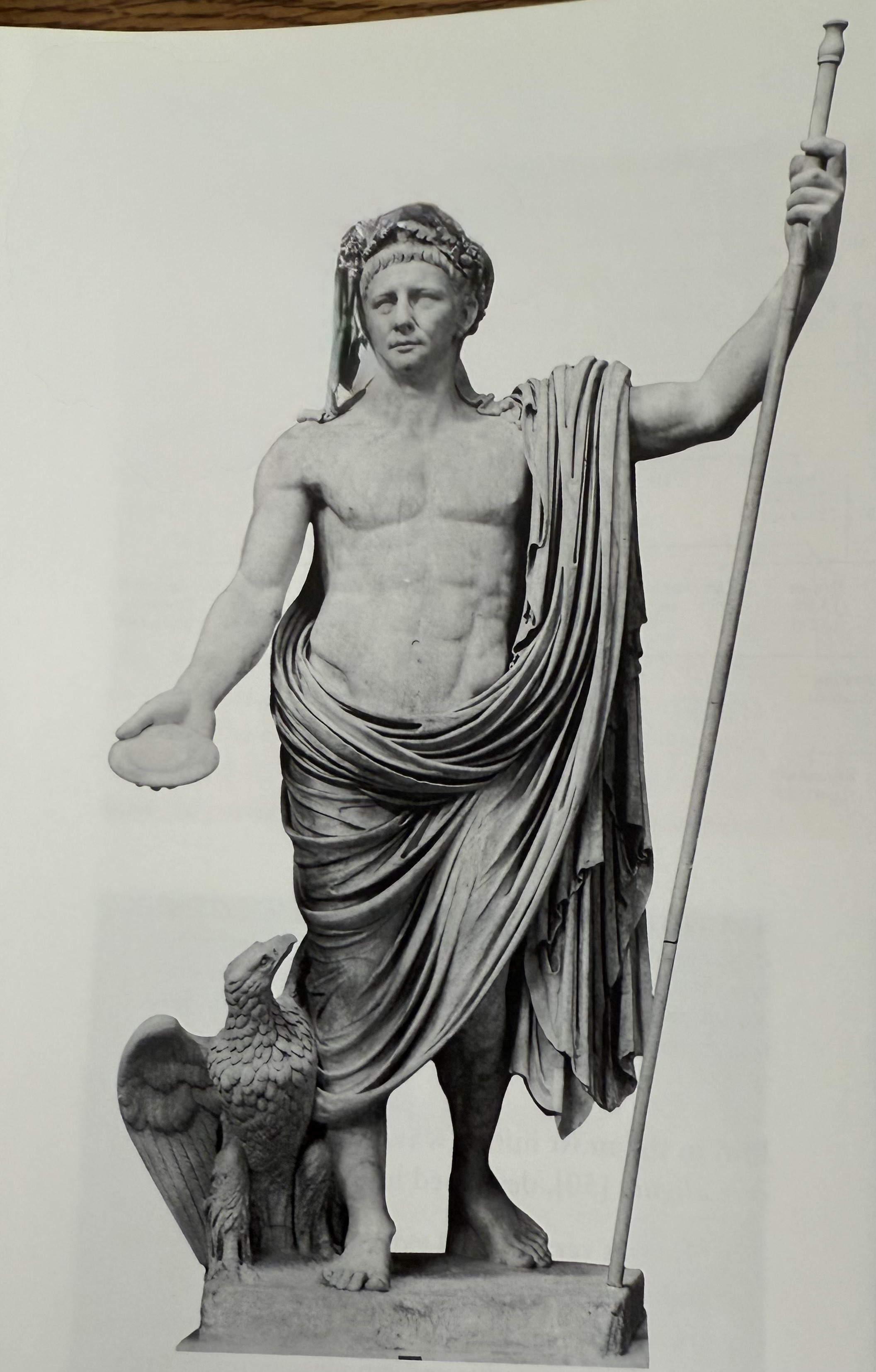
Claudius as Jupiter. Imperial propaganda aimed to communicate messages to illiterate citizens. Created while Claudius was still alive.
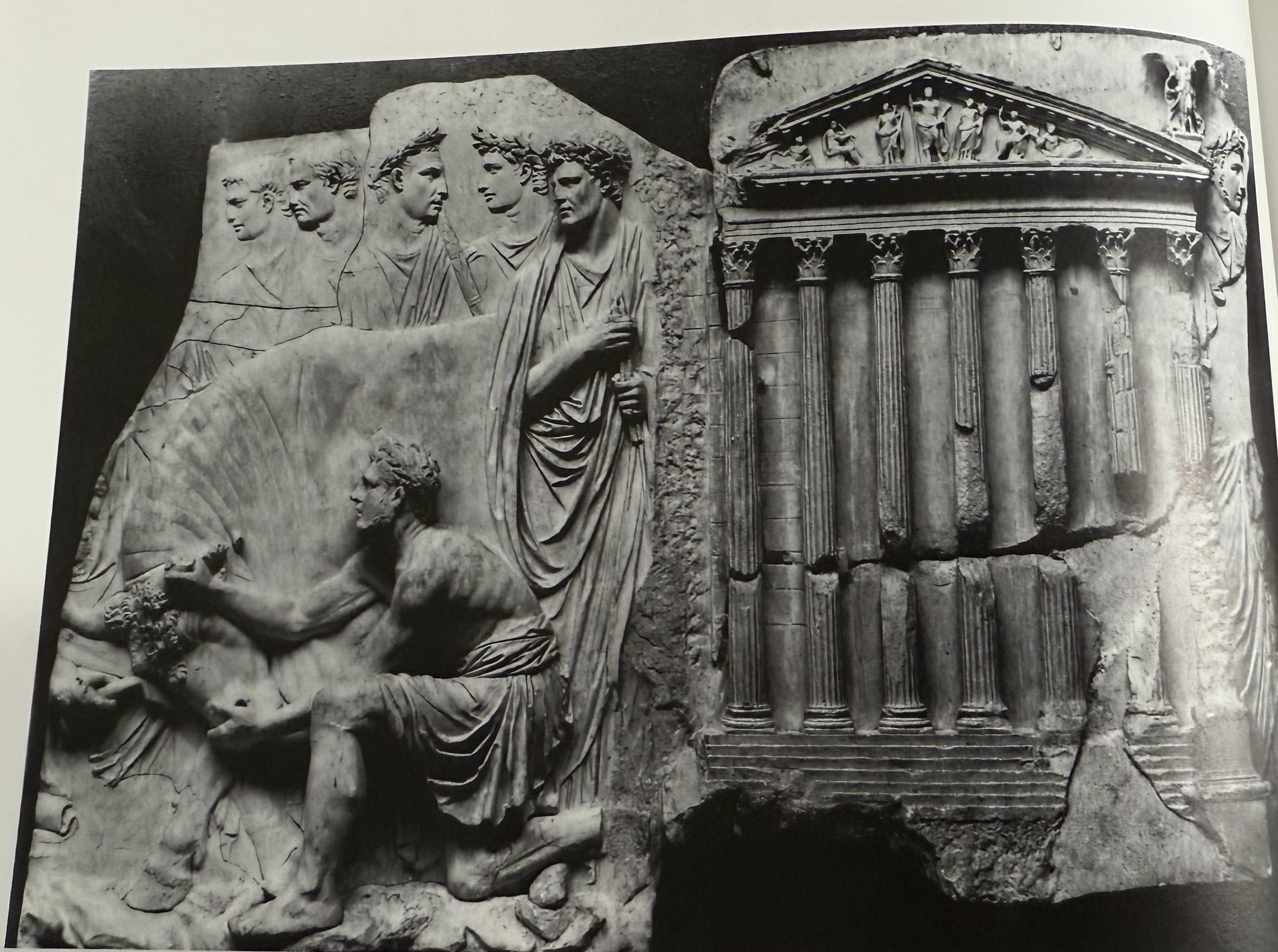
Sacrifice of a bull in Forum Augustus, Claudian altar. Tiberius promised to build, Claudius actually did. Temple to Augustan Piety. Also serves as a historical document.
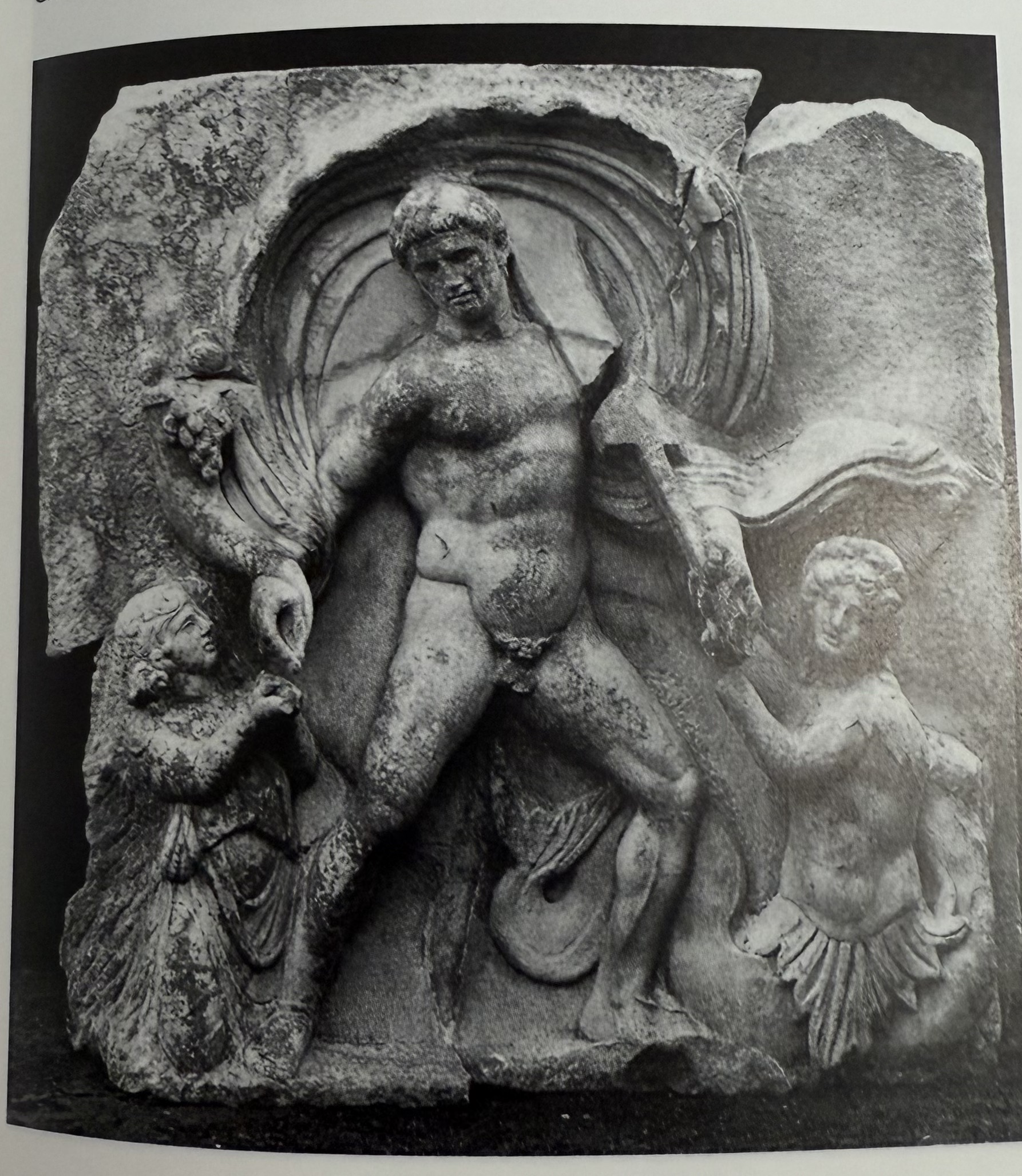
Augustus from Sebasteion. Cult place for Augustus, his family, and descendants. Shown in Heroic Nudity.
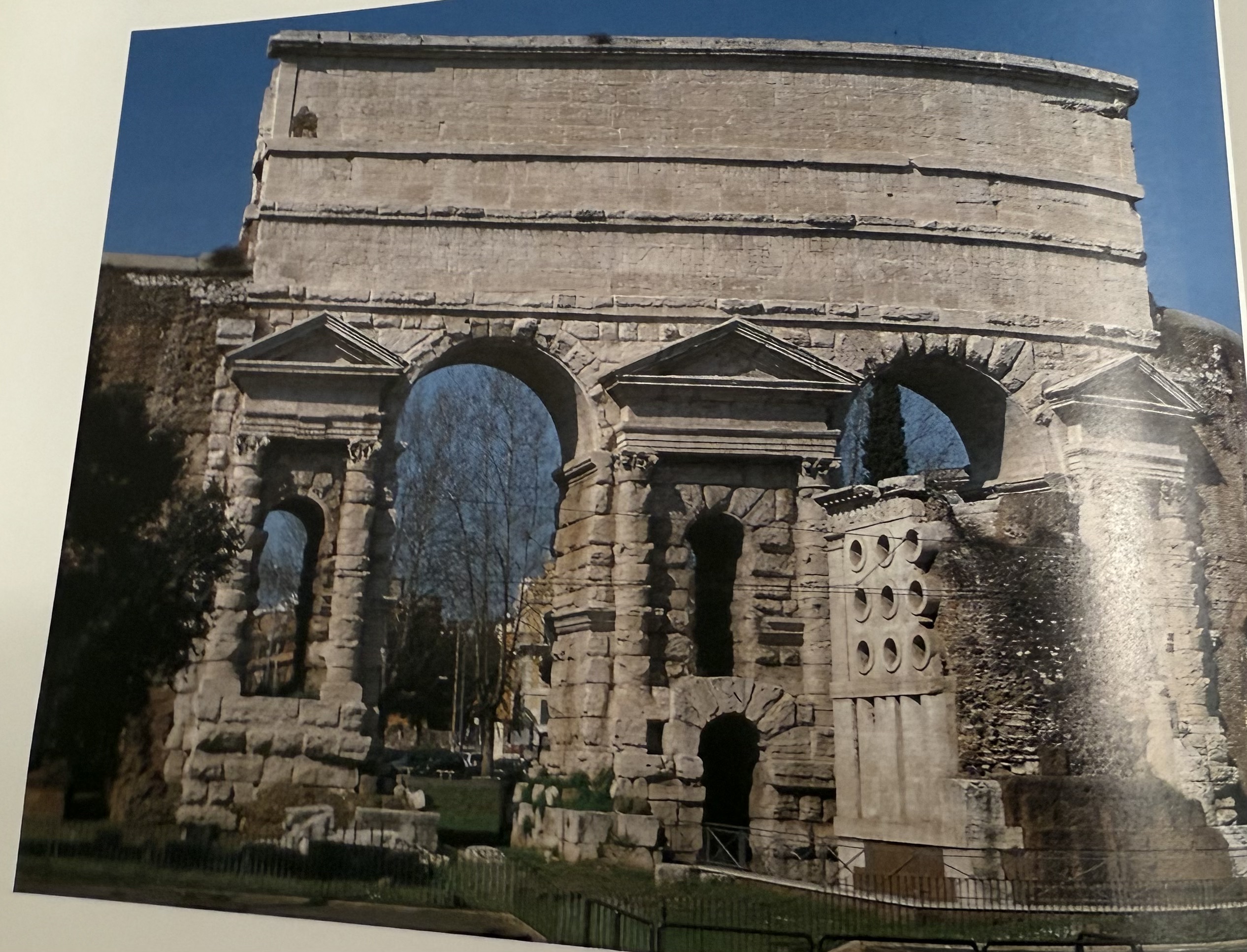
Porta Maggiore. “rustication”
Bucchero
Fine black polished pottery made by the Etruscans. The pottery was deliberately black, showing a new technique but the same pottery shapes as seen before.
Abecedarium
An alphabet. The Etruscan alphebt was adapted from the Greek alphabet. An example can be seen on the bucchero cock, which an abecedarium has been scratched on as a method of practicing writing.
granulation
The decoration of gold jewelery by covering the surface of the object with small globules of gold in elaborate patterns. The Etruscan fibula is an example of the technique.
Regolini-Galassi Tomb
A large early tomb of Cerveteri. It does not look like a house, but instead had passageways that were partially dug out of native rock, and partly built of cut stone.
Temple of Jupiter Capitolinus (Capitolium)
An Etruscan temple, built by Etruscans, using Etruscan materials. One could only enter from the front, and Columns wouldve only been on the porch, not all along the side like greek temples. Built using tufa, timber and terracotta.
canopic urn
An etruscan container for ashes of the dead made of terracotta. The lid often took the shape of a human head. Sometimes other body parts were added to the body of the jar.
adlocutio
Formal speech given by the emperor to his troops. Sometimes used in the traditional stance, with one arm raised being associated with such speech. The orator statue is an example.
cista
A bronze chest that many women wouldve received as a gift after marriage. The ficoroni cista is a particularly fine example, where the outside is engarved with greek mythology.
triclinium
A dining room in a typical roman partician house. This would have been found in the part of the house that was both private and public.
The Alexander Mosaic
Floor mosaic found in a house in pompeii. Likely a copy of a famous painting that we no longer have. An example of opus vermiculatum.
Opus reticulatum
Diamond-shaped stones set on the facing of roman concrete, looking like netting. Technique used at the end of the 1st century.
pozzolana
Active ingredient in roman concrete. Volcanic earth from near Naples, which sets like cement after mixed with water.
The “Servian” Wall
A border wall built around Rome following an attack by the Gauls. Built using tufa cut into opus quadratum.
The Nile Mosaic
A masive mosaic found in Praeneste. Art is creating using tesserae, using a technique known as opus vermiculatum. Highlights the apex of mosaic work. Likely copied from a large piece of artwork housed in Egypt.
suovetaurilla
The sacrifice for purification, which requires a pig, a sheep, and a bull. An age old custom associated with the protection of crops and sometimes the god Mars. As seen in the Census taking relief.
verism
Also known as realism, where artists would depict every detail of the skin, particularly the imperfections. It grows out of an Italic custom of making masks to represent family ancestors.
Campus Martius
A large plaza where Augustus’s sundial and the Ara Pacis were placed. Served as a large reminder of the power of Augustus.
Carrara
A town in italy known for the marble mines. Augustus developed these mines, effecitvely making marble an available resource for roman artisists. They no longer had to import marble from greece.
Pont du Gard
A sandstone Aquaduct built in france, built by Agrippa. Built using the roman arches, showcasing both an aesthetic achievement and a practical purpose of bringing water to the towns in the roman empire.
Temple of Mars Ultor
Stood at the back of the Forum of Augustus. In the cella were statues to Mars, Venus and Julius Caesar.
Mausoleum of Augustus
Large tomb that served as a public monument. The tomb was built to mirror the etruscan hut tombs, this allowed Augustus to point to his Italic heritag.
Theater of Marcellus
Built in honor of the original heir to augustus. It mixed different kinds of standardized architecture (greek columns, roman arches).
Aeneas
Aeneas was the son of Venus, and largely considered to be an ancestor to the Julian family. Augustus frequently linked himself to Aeneas to establish himself as a Julian.
Ara Pacis Augustea
The Altar of Augustan Peace. Built in a permanent stone marble in a fence like structure, it served as an altar to the peace that Augustus brought to the land.
Gemma Augustea
A large gem cameo that shows the transfer of power from Augustus to Tiberius. Augustus is shown in a divine way, while Tiberius is shown victorious.
Sperlonga
Location of Tiberius’ seaside villa. Had a massive grotto, which had fish breeding tanks, but also massive Hellenistic sculptures.
Aphrodisias
City named for Venus Aphrodite. Housed the Sebasteion, which was a cult like temple for Augustus and his family. Housed several marble statues of Augustus and his family, all shown in heroic nudity, which the greek citizens would have been accustomed to.
damnatio memoriae
A decree of the Senate condemning someone’s behavior and ordering that all images and references of him be destroyed or erased. Nero is a famous example, where many of his statues were re-carved into images of his successor.
Aqua Claudia
Large aqua duct, built by claudius, which brought water to rome. Shows an example of rustication, which is an unfished look to the stones.
Domus Aurea
Nero’s golden house. built after a great fire in rome.
Orange (Arausio)
Town in france where some of the best preserved examples of roman architecture exists. I.e. theaters, triumphant arch, etc.
Who were the Etruscans? How do Etruscan artifacts, especially in terracotta and bronze, inform our knowledge of who they were and their impact on Roman civilization?
Greek colonists in pre-Roman Italy. How do Etruscan and Roman artifacts show how Greek civilization shaped development of civilization in Italy?
Funerary culture Villanovan, Etruscan, and Roman funerary culture. What monuments and artifacts provide the best information for how these ancient peoples approached and perceived death and dying?
The urban topography of ancient Rome: How did it evolve over time and what were the major monuments in each major period (Etruscan period, Republic, and the age of Caesar, Augustus, and the Julio-Claudians)?
Wall paintings in Etruscan tombs and Roman houses. What do they look like and what do they tell us about what was important to these ancient peoples?
Dynastic Art. What is dynastic art? Provide examples that explain its appearance and aims.